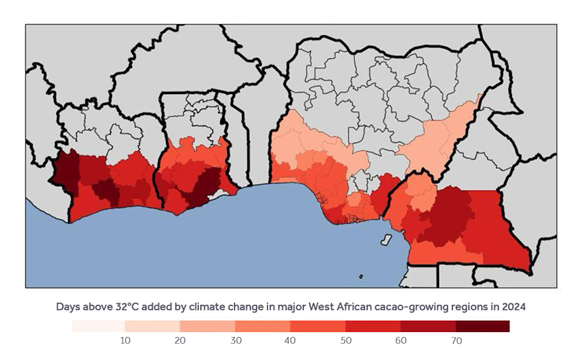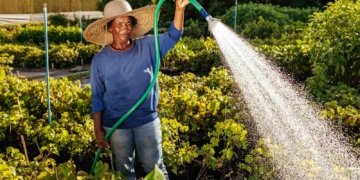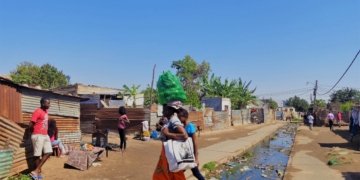YAOUNDE, Cameroon (BG) – West Africa, which supplies approximately 70% of the world’s cacao, is facing a crisis as climate change disrupts production, according to a Climate Central report titled ‘Climate Change is Heating Up West Africa’s Cocoa Belt.’
The report, published on February 12, highlights how rising temperatures and unpredictable rainfall patterns reduce the quantity and quality of cacao beans, with significant economic and global market implications.
Cacao thrives in warm, humid conditions, but excessive heat can be harmful. Over the past decade, climate change has added two to four extra weeks of temperatures above 32°C (89.6°F) per year during the main harvest season (October-March) in Côte d’Ivoire, Ghana, Cameroon, and Nigeria, according to Climate Central.

In 2024 alone, 71% of cacao-growing regions in these countries experienced an additional six weeks of extreme heat, making it harder for cacao trees to grow healthy pods.
When temperatures surpass the optimal threshold, cacao trees struggle to photosynthesize effectively, leading to shriveled flowers, smaller pods, and higher pod rot rates.
In Côte d’Ivoire, farmers reported that extreme heat caused leaves to fall, exposing pods to direct sunlight and worsening heat stress.
Unpredictable Rainfall Worsens Conditions, Economic and Global Impact
Cacao trees depend on consistent rainfall, but erratic precipitation patterns have worsened conditions.
In July 2024, Côte d’Ivoire received 40% more rain than expected, flooding fields and damaging crops. By December, rainfall had nearly disappeared, further stressing cacao trees.
Similar rainfall inconsistencies affected Ghana, Nigeria, and Cameroon, reducing yields and increasing global chocolate prices.
With cacao yields declining due to climate change, chocolate costs are rising. In 2023-2024, increased smuggling and illegal mining reduced cacao supply, further straining local economies.
As temperatures continue to rise, West African farmers may face worsening conditions, threatening the future of cacao production and the livelihoods of millions.
Adaptation Strategies for Cacao Farming
According to the report, experts recommend agroforestry practices, improved water management, and pest control measures to safeguard cacao production in West Africa.
Planting shade trees like mango and banana can protect cacao from extreme heat while enhancing soil fertility and moisture retention.
Diversifying crops can also reduce farmers’ financial risks and improve resilience. Addressing cacao swollen shoot virus (CSSV) through better pest management is important.
While these strategies offer hope, their adoption remains challenging due to high costs, slow implementation, and the growing threat of extreme weather events.
Without urgent action, the future of cacao farming—and global chocolate supply—remains uncertain.
































